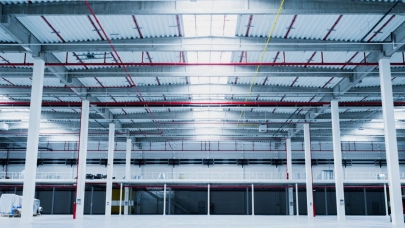
Stagnant productivity and a shortage of workers in the construction industry could lead to a deficit of up to $40 trillion in the global construction sector by 2040, according to the latest analysis by McKinsey & Company. According to a survey by PlanRadar, 63% of construction companies consider construction to be an area that no longer attracts young people.
The construction industry is facing an unprecedented workforce crisis that threatens the adherence to construction plans and the performance of the entire industry. At the same time, the growth of construction production is a key engine of economic growth in many countries: the sector contributes significantly to GDP and has a multiplier effect on dozens of downstream sectors.
How this situation affects the Czech market is described by Adam Heres Vostarek, regional manager for the Czech Republic at technology company PlanRadar: “The domestic construction industry faces this challenge in combination with a dramatic increase in personnel costs and uncertainty associated with lengthy permitting processes. Moreover, unlike some other European markets, where companies are primarily looking for ways to bring a new generation into the industry, a significant portion of Czech respondents also point to the impacts of restrictive immigration policies. Almost a fifth of them consider limited access to qualified labour from abroad to be one of the main causes of the current shortage of employees.”
Generation gap
The labour crisis in the construction industry is not the result of a single cause, but a combination of several mutually reinforcing social changes, which are manifested in a growing generation gap. The declining interest in technical fields is thus leading to a dramatic decrease in the number of new workers entering the industry. Experienced professionals are gradually retiring without leaving behind qualified successors. The lack of young workers increases the workload of existing employees, which paradoxically makes the industry even less attractive to potential candidates.
However, one remarkable fact stands out in the midst of all this: Czech construction companies have so far demonstrated extraordinary resilience to personnel problems. Almost 43% of them are still able to adhere to project schedules despite the acute shortage of workers, which represents the best result of all the countries analysed. However, this seemingly positive figure may be a warning. It probably signals that the Czech construction market is already operating at the very limit of its capacities and has exhausted most of the available reserves, which is unsustainable in the long term. If the current unfavourable trends deepen without systemic changes, this relative stability may quickly turn into collapse, because the room for further improvisation is practically exhausted.
The shortage of labour is reflected in everyday construction practice. 75% of construction companies participating in the PlanRadar global survey stated that the personnel crisis directly caused delays to their projects. Although the impact in the Czech Republic is not yet so dramatic, it is definitely a dangerous trend.
Efficiency is the engine
“Addressing the structural causes of the current crisis will require effort and time. Restoring the attractiveness of the sector for young generations and creating functional educational paths is a long-term task that cannot be solved overnight. But what construction companies need now is a radical change in approach: instead of passively waiting for the labour market to recover, they must actively maximise the use of existing human resources,” emphasises Adam Heres Vostarek. Efficiency is becoming a critical engine that keeps the entire industry moving competitively. “It’s not about working harder, but better, smarter. When teams are perfectly aligned, information flows without the slightest hitch, and reporting does not consume precious time, companies can handle significantly more orders and grow in a truly sustainable way. Even seemingly small changes in efficiency add up exponentially,” describes Heres Vostarek.
If companies really want to appeal to young professionals, they need to offer them a technologically advanced work environment that matches their digital habits and high expectations. The emerging generation demands a meaningful role in society, clearly defined processes and advanced technologies that allow them to focus on creative solutions to complex problems instead of wasting their talent on frustrating administrative routine. “Young professionals are not just looking for a job – they are looking for an environment where they can realise their potential and where technology acts as an accelerator of their abilities, not an obstacle,” adds Adam Heres Vostarek.



